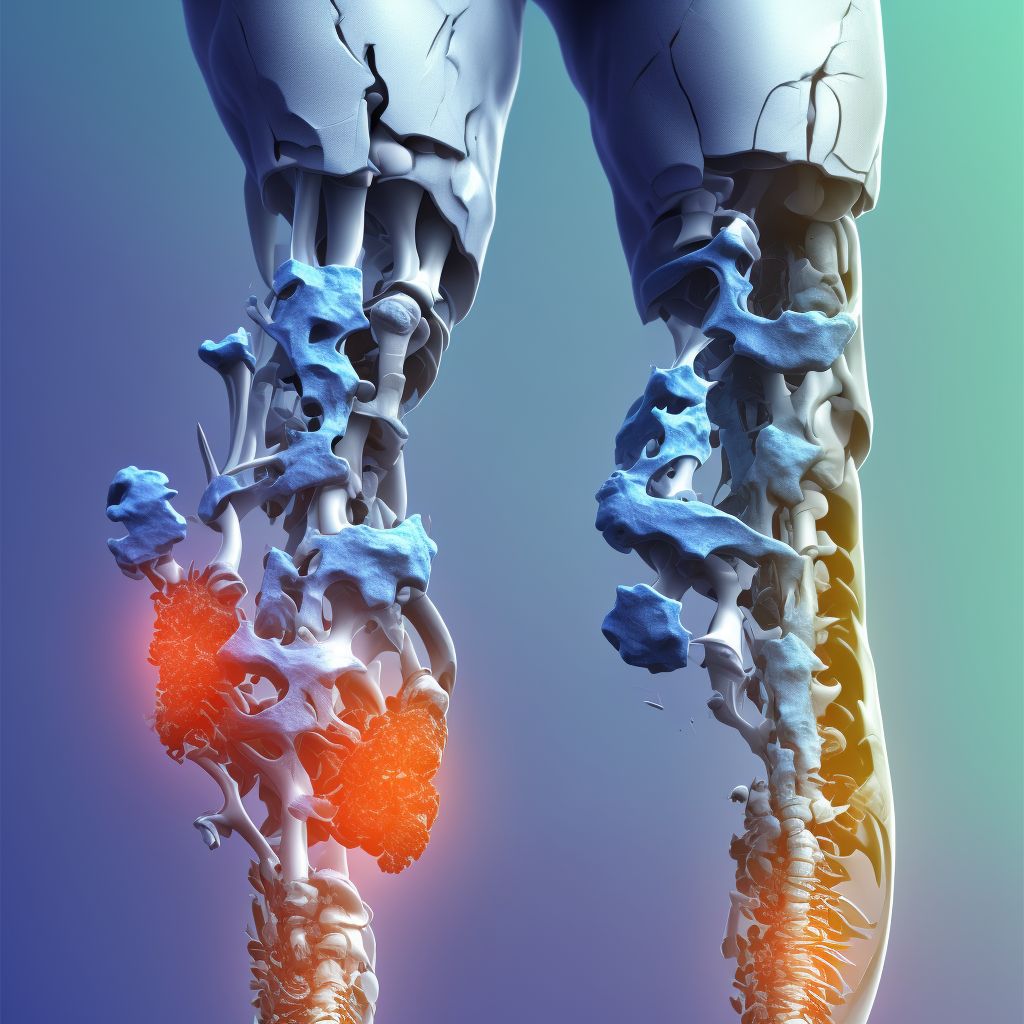
Displaced fracture of right tibial tuberosity, subsequent encounter for open fracture type IIIA, IIIB, or IIIC with malunion Save
ICD-10 code: S82.151R
Disease category: S82.151: Displaced fracture of right tibial tuberosity
Displaced Fracture of Right Tibial Tuberosity: Understanding the Subsequent Encounter for Open Fracture Type IIIA, IIIB, or IIIC with Malunion
A displaced fracture of the right tibial tuberosity can be a complex and challenging injury that requires careful management and treatment. In some cases, the fracture may not heal properly, resulting in malunion. This subsequent encounter for open fracture Type IIIA, IIIB, or IIIC with malunion requires specific attention and understanding.
When a fracture is classified as Type IIIA, IIIB, or IIIC, it indicates the severity of the injury. Type III fractures involve an open wound, which increases the risk of infection and complicates the healing process. Additionally, malunion occurs when a fracture heals in an abnormal position, leading to functional impairment and potential long-term complications.
Managing a subsequent encounter for an open fracture with malunion involves a comprehensive approach. The first step is to assess the patient's medical history and conduct a thorough physical examination. This helps determine the extent of the malunion and any associated complications.
During the subsequent encounter, healthcare professionals may use various diagnostic imaging techniques, such as X-rays or CT scans, to evaluate the malunion and assess the bone alignment. This information is crucial in developing an appropriate treatment plan.
- Reevaluation of the fracture site: The healthcare provider carefully examines the fracture site to assess the range of motion and stability of the affected area.
- Functional assessment: Evaluating the patient's functional abilities helps determine the impact of the malunion on daily activities and mobility.
- Complication evaluation: Any potential complications, such as nerve damage, vascular compromise, or infection, need to be identified and managed accordingly.
The subsequent encounter for an open fracture with malunion may require a multidisciplinary approach involving orthopedic surgeons, physical therapists, and other healthcare professionals. The aim is to develop an individualized treatment plan tailored to the patient's specific needs and goals.
While this article does not cover treatment options, it is essential to emphasize that prompt medical attention and appropriate management are crucial for achieving the best possible outcomes for patients with a displaced fracture of the right tibial tuberosity and subsequent malunion.
Treatment of Displaced fracture of right tibial tuberosity, subsequent encounter for open fracture type IIIA, IIIB, or IIIC with malunion:
Treatment Options for Displaced Fracture of Right Tibial Tuberosity with Malunion
A displaced fracture of the right tibial tuberosity is a severe injury that can lead to long-term mobility issues if not properly treated. When the fracture results in malunion, meaning that the bones have not healed in their correct alignment, it becomes even more crucial to explore treatment options...
To see full information about treatment please Sign up or Log in